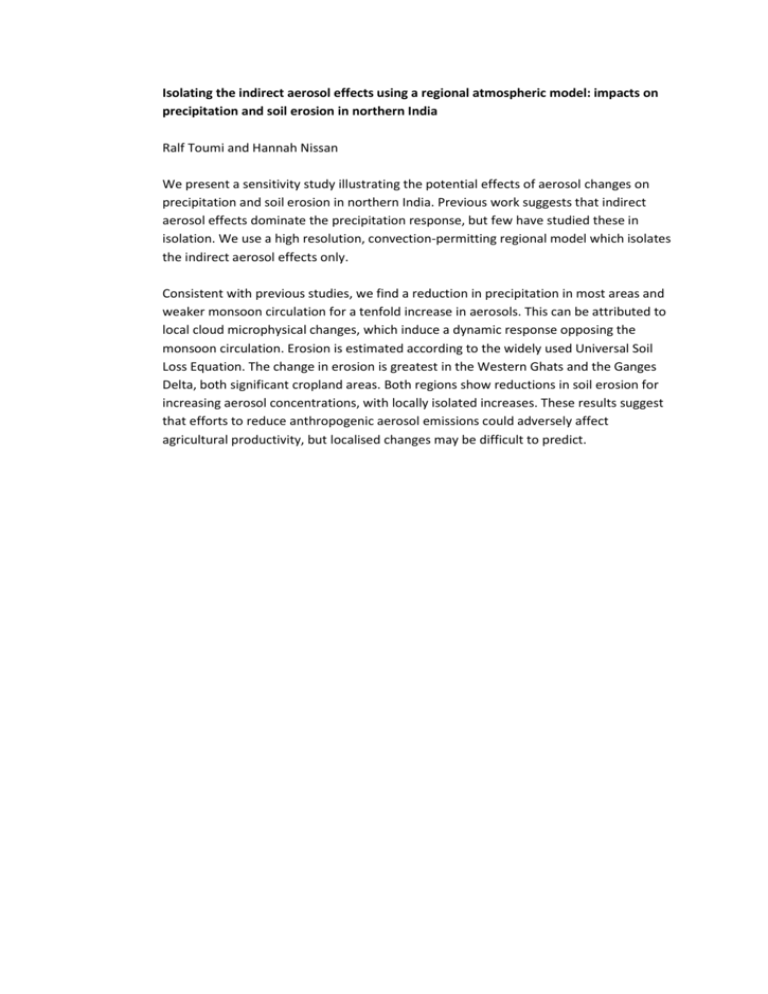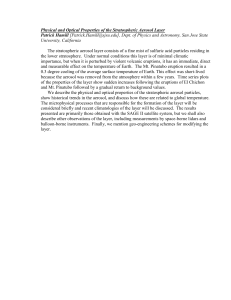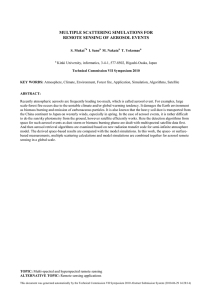Toumi_LORRI
advertisement

Isolating the indirect aerosol effects using a regional atmospheric model: impacts on precipitation and soil erosion in northern India Ralf Toumi and Hannah Nissan We present a sensitivity study illustrating the potential effects of aerosol changes on precipitation and soil erosion in northern India. Previous work suggests that indirect aerosol effects dominate the precipitation response, but few have studied these in isolation. We use a high resolution, convection-permitting regional model which isolates the indirect aerosol effects only. Consistent with previous studies, we find a reduction in precipitation in most areas and weaker monsoon circulation for a tenfold increase in aerosols. This can be attributed to local cloud microphysical changes, which induce a dynamic response opposing the monsoon circulation. Erosion is estimated according to the widely used Universal Soil Loss Equation. The change in erosion is greatest in the Western Ghats and the Ganges Delta, both significant cropland areas. Both regions show reductions in soil erosion for increasing aerosol concentrations, with locally isolated increases. These results suggest that efforts to reduce anthropogenic aerosol emissions could adversely affect agricultural productivity, but localised changes may be difficult to predict.











